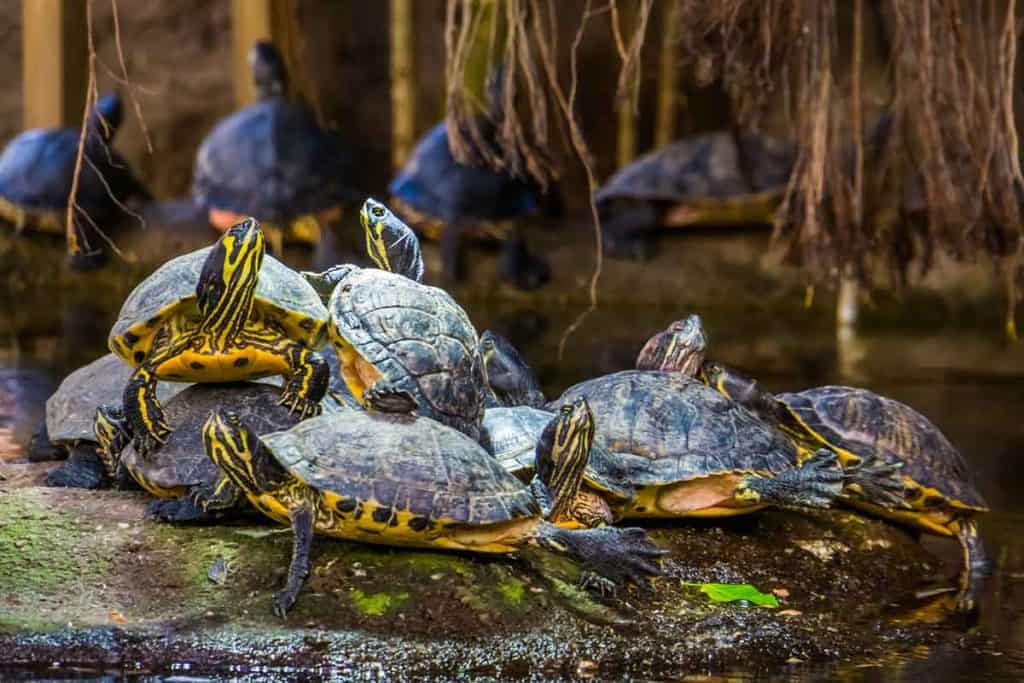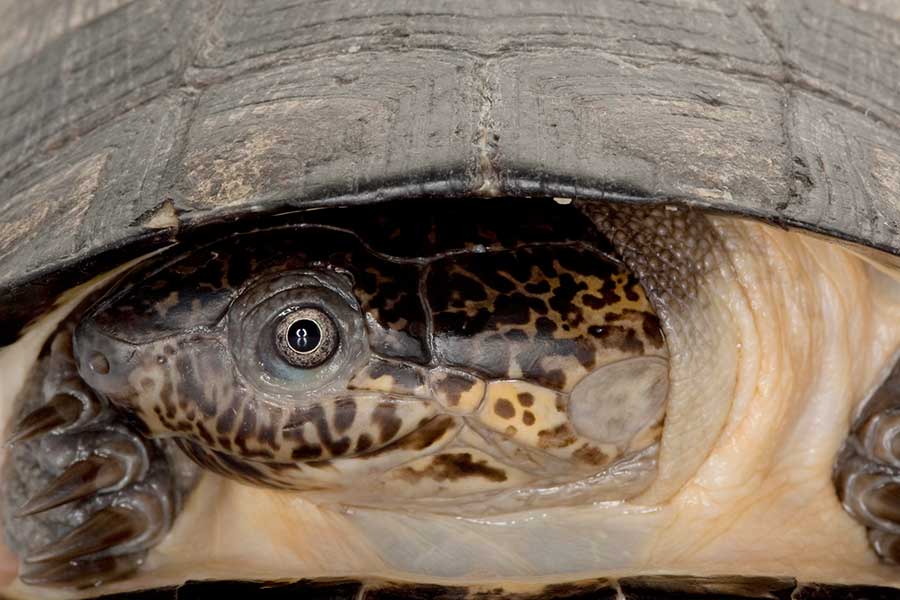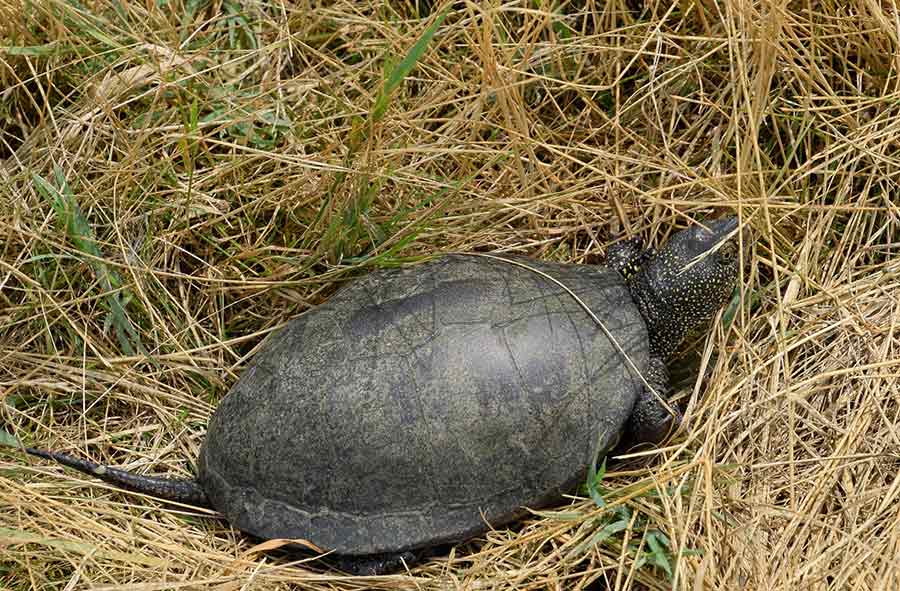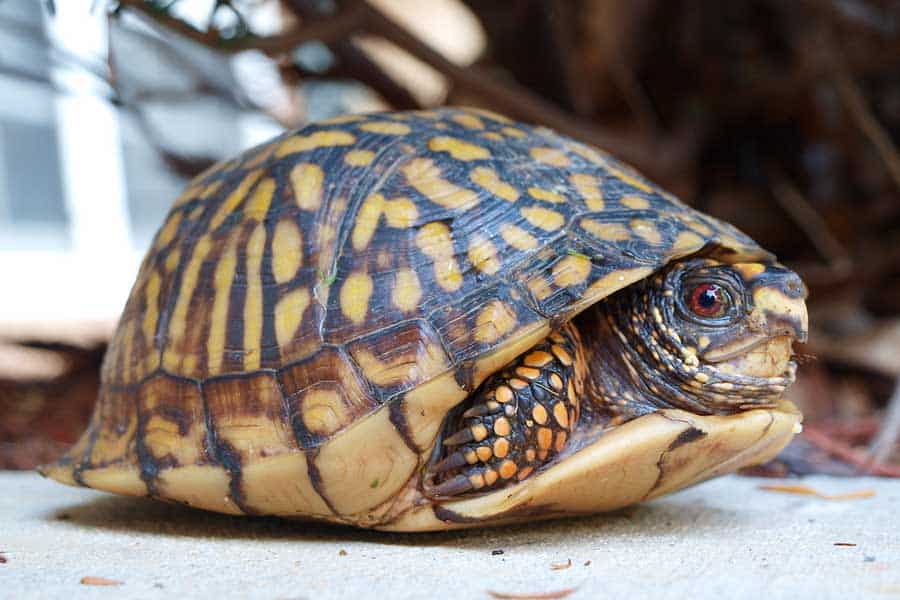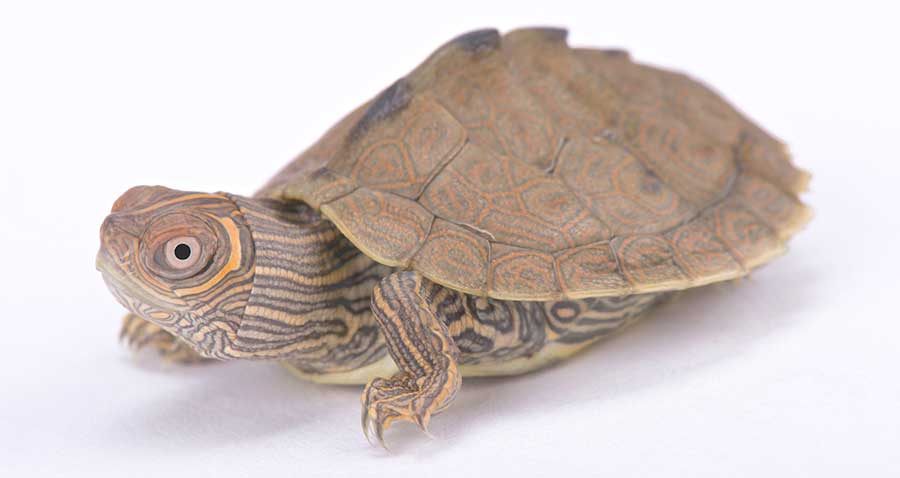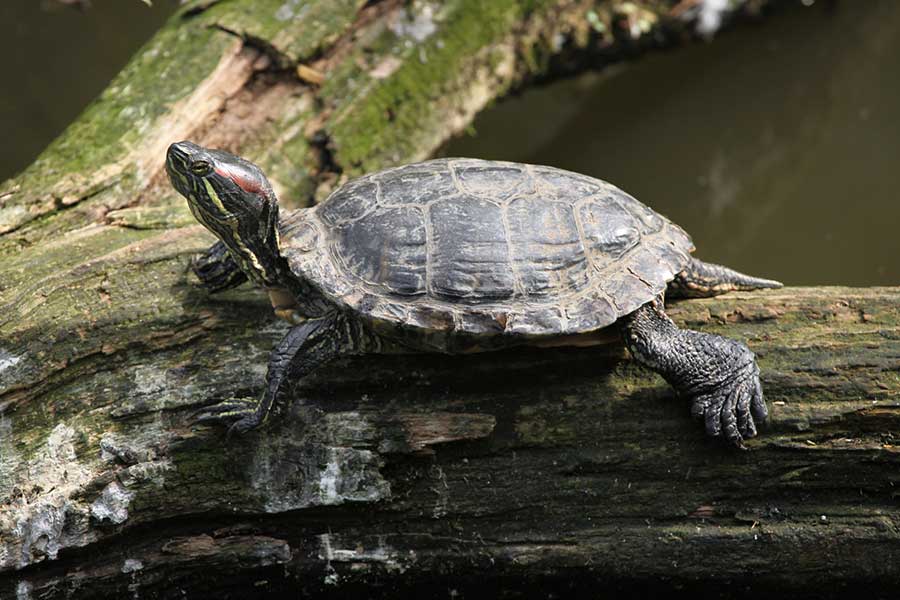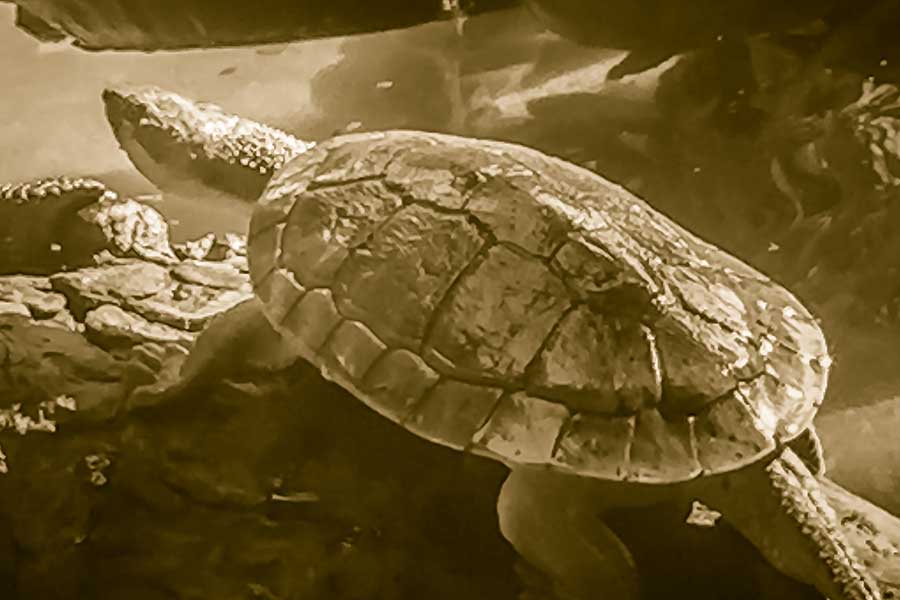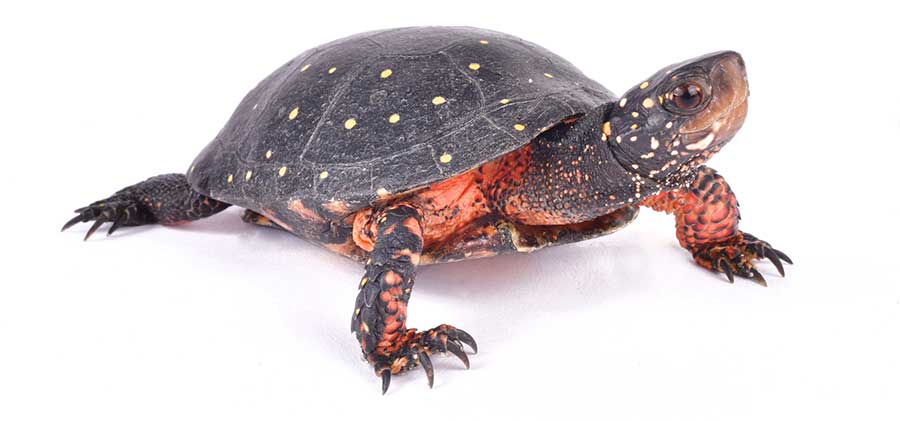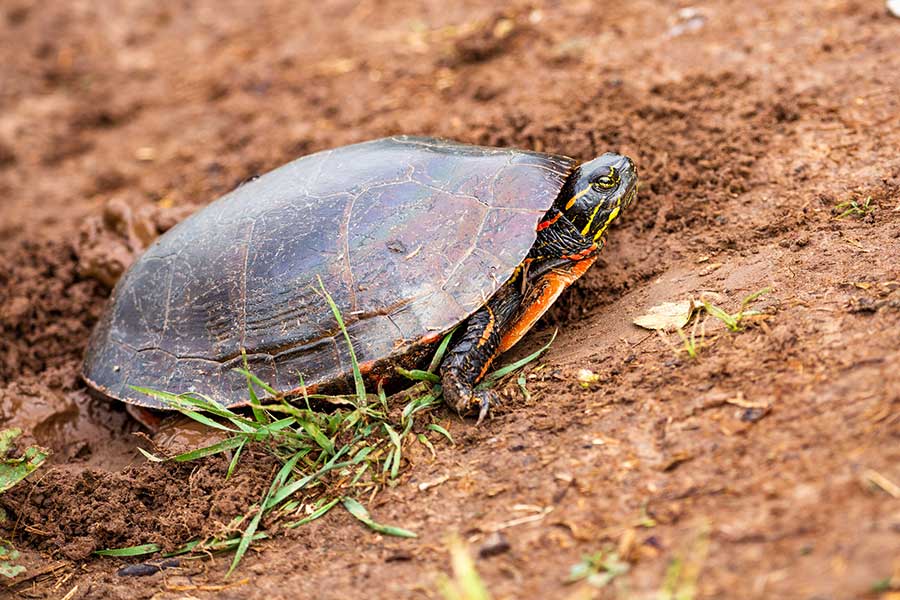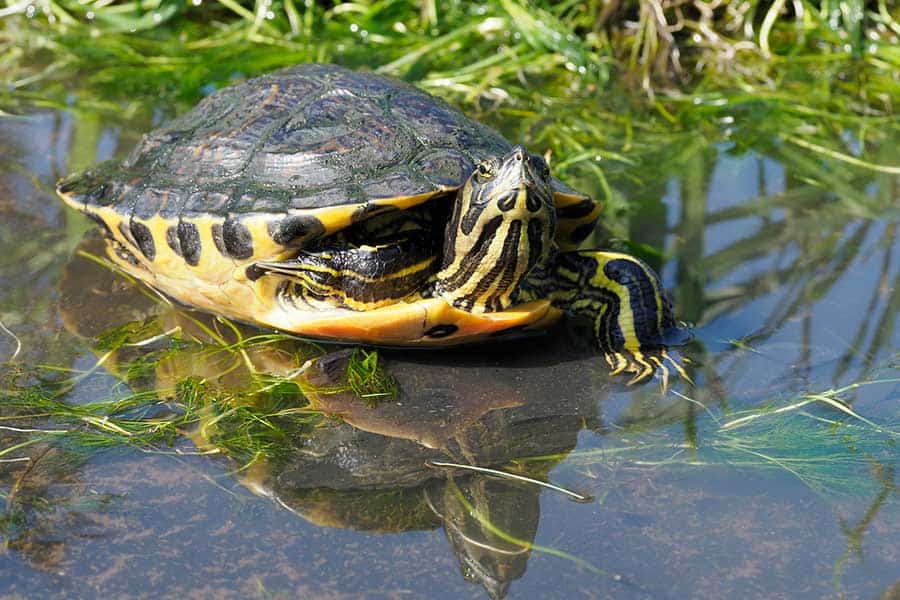Just as different breeds of dogs are suitable for different types of owners, different species of turtles will fit into your home better than others depending on the space and care that you can offer them. That is why we have put together this list of the best pet turtles to help you find the right reptile companion for you.
Turtles are becoming increasingly popular on the pet market, and it is easy to understand why. They are incredibly cute and they seem pretty easy to look after, but they can actually be more work than you imagine.
As well as needing more space than you might think, they can have complex care needs in terms of light exposure, diet, and clean water. Plus, some of them can live for more than 100 years, making them a pretty big commitment.
After our list of the best turtles to adopt as pets, we’ll share essential things that you should know before deciding to take a new turtle home.
Presenting… The Best Pet Turtle Species
African Sideneck Turtle
These fairly flat turtles are particularly cute because they have long necks that they can extend Quick Facts
- Semi-aquatic species
- 6-9 inches long
- 50-year lifespan
- Originally from West Africa (Angola, Guinea, Ghana, Senegal, Liberia, Sierra Leone, and the Congo)
- Need at least a 50-gallon tank
All the way into their shell, which makes them feel highly expressive. They are curious and won’t scuttle away when you approach, which makes them great pets. These are very active turtles, so they tend to need a bigger tank than you would imagine for their 9-inch size.
As well as needing a lot of water to swim around in, these turtles can get sick if their water is not very clean. Their tank should be cleaned on a weekly basis, rather than monthly, and you will probably want to invest in a powerful filtration system.
Common Musk Turtle
Quick Facts
- Semi-aquatic species
- 3-5 inches long
- 50-year lifespan
- Originally from southeastern Canada and the eastern United States
- Need at least a 5-gallon tank
This species makes a popular pet because they are small and relatively easy to care for; however, while they aren’t aggressive they can give off a stinky musky odor to drive off predators if they feel threatened or scared. Handle them carefully so they don’t stink up your house.
They aren’t strong swimmers, so they do well in an aquarium with relatively shallow water and lots of landmasses for them to stop and rest on.
Eastern Box Turtle
Quick Facts
- Semi-aquatic species
- 5-7 inches long
- 30-40 year lifespan
- Originally from the eastern half of the United States
The distinctive orange coloring of the Eastern box turtle makes them a popular pet as they look very different. While they can be shy and don’t like to be handled too much, they are never aggressive, making them good pets. You might tempt them to come to you if you have a tasty treat in your hand.
These turtles can live indoors in an aquarium or outdoors as long as it is hot and they have plenty of space to bask in the sun (or under a basking light). They prefer a shallow pool for bathing rather than deep swimming.
Mississippi Map Turtle
Quick Facts
- Semi-aquatic species
- 5-10 inches long (females bigger than males)
- 30+ year lifespan
- Originally from Texas, Louisiana, and Mississippi
- Need at least a 10-gallon tank
These are the sharks or the dolphins of the turtle world, with a distinctive dorsal fin running down their shell. They make appealing pets as they need a lot less space than many other turtle breeds and are happy just circling a smaller tank; however, they aren’t that friendly or sociable with people.
These turtles are hardy and are less likely to develop health issues in captivity than other species. That said, they should still have clean and heated water plus UVB and basking lights. They will also benefit from some secluded foliage that they can hide under when desired.
Red-Eared Slider
Quick Facts
- Semi-aquatic species
- 7-12 inches long
- 20-30 year lifespan
- Originally from the Missippi River and the Gulf of Mexico
- Need at least a 15-gallon tank
This is a popular semiaquatic turtle species as they tend to be friendlier and more interested in their owners than many other species. They are also pretty active, so just watching them “do their thing” around their tank can be highly enjoyable.
These turtles are happy in an indoor aquarium, but they will also thrive if you have an outdoor pond area that they can inhabit, as long as you live in relatively warm temperatures (above 82 degrees Fahrenheit).
Reeves’ Turtle
Quick Facts
- Semi-aquatic species
- 6-9 inches in length
- 20-year lifespan
- Originally from central and eastern China, as well as North and South Korea, Taiwan, and Japan
- Need at least a 10-gallon tank
Reeves’ turtles make excellent pets because they are highly sociable and even enjoy some strokes and cuddles, as long as they are treated gently. They are pretty small turtles, and while they love the water they aren’t prolific swimmers so they do fine in a smaller tank.
While these are healthy creatures, they have a short lifespan for a turtle so they can be a good choice if you are worried about a long-term commitment.
Spotted Turtle
Quick Facts
- Semi-aquatic species
- 4-6 inches long
- 50-100 year lifespan
- Originally from southern Maine, Quebec, Ontario, and along the Eastern US to Florida
- Need at least a 5-gallon tank
This is one of the smallest turtle species, which means that they do well in limited spaces. They are also cute with their spots, which either makes them look like a leopard or a spotty teen. Just like those teens, though, they are a lifelong commitment as they can live for over 100 years.
While they are semi-aquatic, spotted turtles aren’t particularly strong swimmers so they do better with shallow water and lots of landmasses that they can easily access. While they are omnivores, plenty of animal-based protein will keep them healthy.
Western Painted Turtle
Quick Facts
- Semi-aquatic species
- 10 inches long
- 50-year lifespan
- Originally from western Ontario and British Columbia and into the central United States
- Need at least a 50-gallon tank
These turtles have distinctive and attractive markings, which means that they are often highly sought after as pets. When you get them home you will realize that they are quite shy and don’t like to be handled, but they are active and interesting turtles and especially love swimming.
Because they like to swim they need relatively large tanks. It is also a good idea to choose food that can be scooped out of the water. They like to eat while swimming and will leave their leftovers floating.
Wood Turtle
Quick Facts
- Terrestrial species
- 5-8 inches long
- 50-year lifespan
- Endemic to North America
- Need at least a 15-gallon tank
These little guys are terrestrial and are friendly so they don’t mind being handled. They are pretty hardy and do well in most environments, as long as they have enough space to roam. They tend to do very well in outdoor enclosures.
Since these are terrestrial turtles, if they get into deep water they can drown! While they need a pond or pool for cooling off, it should be shallow to reduce risks. These turtles are illegal in some states, so do your research before getting one.
Yellow-Bellied Slider
Quick Facts
- Semi-aquatic species
- 5-13 inches long
- 40-year lifespan
- Originally from Florida to southeastern Virginia
- Need at least a 100-gallon tank
This species makes a popular pet because they are just so adorable with their yellow, striped coloring. They also tend to be active during the day, so they are more interesting to watch than many other turtle species.
While they are relatively hardy and easy to care for, they can get a lot bigger than some other turtles, so they need quite a bit of space to call home. They can thrive in a large tank or outdoors.
You can read our guide to the best tortoises to adopt as pets here.
Adopting a Turtle? Need-to-Know Facts
Turtles Need Big Tanks
While you can certainly create a habitat for a turtle inside a fish aquarium, turtles need a lot more space than your average fish. They need both aquatic and terrestrial environments, plus plenty of space to walk and swim both for exercise and mental stimulation.
As a general rule, a turtle should have one gallon of space for every inch of its shell but this is a minimum. Turtles are active reptiles, so the more space they have the better. A small 5-inch turtle will use every corner of a 100-gallon tank.
Read our guide to the best turtle tanks here.
Turtles Are Solitary Creatures
Don’t be tempted to get two turtles to keep each other company. Turtles tend to be solitary creatures and do better if there is only one of them in the tank. If you do want multiple turtles, make sure that you are keeping only females together.
Not All Turtles Swim
While many turtles are semi-aquatic, there are also terrestrial turtle breeds. While they will enjoy having a splash around in the water occasionally, these terrestrial breeds don’t tend to be able to swim. This means that they could drown in deeper water. Terrestrial breeds should only have access to shallow water for their own safety.
Aquatic Turtles Need Dry Land
We tend to call aquatic turtles “semi-aquatic” because they actually need quite a bit of dry land. Turtles bask in the sun to regulate their body temperatures and need to do this for several hours a day. For this reason, aquatic turtles need plenty of landmasses in their habitat to facilitate this activity.
Turtles Need UVB and Heat Lights
Turtles bask in the sun to maintain their body temperatures, so if you are keeping them in a tank, they will need a heat light focussed on a landmass in their habitat to allow them to do that. Most heat lamps won’t provide turtles with the exposure to UVB radiation that they need, though, so that’s not all they require.
Turtles need lots of
Turtles Live a Long Time
While adopting a dog that may live for 15 years is a big commitment, it is nothing when compared with a turtle. 20 years is considered a short lifespan for a turtle, and they can live for more than 100 years. They might even outlive you! It is important to consider whether you will be able to care for a turtle for this length of time before committing to taking one home.
Turtles Create a Lot of Mess
When it comes to digestive waste, turtles produce a lot more than your average reptile and certainly more than your average fish! This means that while you might keep a turtle in a fish tank, you need a pump and filter system for a tank about twice the size of the one that you are using. Otherwise, their water will become contaminated too quickly and they can easily catch infections.
Turtles Carry Salmonella
Most turtles carry salmonella in their intestinal tracts. While it doesn’t affect them, they can pass it to you or other pets in your home if they come into contact with turtle droppings. This is why it is extremely important to wash your hands after handling your turtle or cleaning their tank. This is especially important with smaller kids, who are more likely to put their hands in their mouths.
Turtles Are Omnivores
Turtles are omnivores, which means that they need both meat and plant foods. You should generally feed your turtle a diet of insects, fish, freeze-dried mealworms, and dark leafy greens. They also enjoy fruits such as squash, watermelon, and tomatoes. While you should feed your turtle regularly, they only need to eat 4-5 times a week.
Turtles Need Regular Baths
It is a good idea to give your turtle a bath at least once a month to keep them free of bacteria and smelling good. A toothbrush is the favored tool of the trade, but remember that turtles can feel their shell, so never scrub too hard. Don’t forget their legs, tail, and neck, either, though these are significantly more sensitive areas.
FAQs
Is a turtle a good pet?
Turtles are active reptiles and full of personality, and while you do need to establish the right habitat for them, they are relatively easy to care for. Whether they make a good pet depends on what you are looking for. Most turtles don’t like to be handled too often and can become stressed with too much human attention. Their feces also contains Salmonella, so it is important to wash your hands thoroughly every time you touch your turtle or their enclosure.
Why are pet turtles illegal?
It is illegal to sell turtles as pets in some places because they carry salmonella. When they aren’t properly cared for, they can easily pass this to humans, causing terrible bouts of vomiting and diarrhea.
Do turtles get attached to their owners?
Turtles can quickly learn to recognize their owner by sight, smell, and the sound of their voice. They will often become attached to their owners as well. They will become less shy around the people they like, and even display playful behavior.
Is it OK to use tap water for turtles?
Tap water is not good for turtles because it is high in chlorine that can damage their eyes. Use a fish-safe dechlorinate to filter tap water to use in your turtle’s tank.
Ready to Love a Turtle?
Turtles can make great household pets, but taking care of them can require more work than you imagine. They have a lot of specific care needs which means that creating the right habitat for them is essential.
You can get a headstart by choosing a species of turtle that you are likely to be able to care for. Consider the size to which your turtle will grow and how large their habitat will need to be. Also, think about whether you will be keeping them in a tank or in an outdoor enclosure. Plus, don’t forget to consider their lifespan and whether you will be able to care for them in the long run.
Hopefully, you will find the perfect turtle species for your next pet on our list.
Do you have experience raising turtles? Which breeds do you think make the best pets? Share your thoughts with the community in the comments section below.

